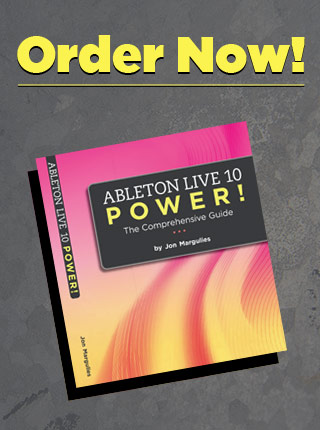Hey everyone – occasionally I’m going to ask you for support of some sort to help keep the Live tips coming. Today, I’m asking that people help Haitian earthquake survivors. Even if our donations are small, if everyone helps it really adds up. The link above is to the aid organization started by Wyclef Jean. I am no expert on international aid or disaster relief, so please do whatever you think is best.
Today we’ll wrap up this four-part series of live performance tips by discussing the sometimes elusive details of controlling an onscreen knob with a physical button. Remember, our goal here is to have a single filter sweep knob on the controller, and a button that switches the filter mode.
The mapping in Live is pretty easy. 9 times out of 10 when people have
serious MIDI remote mapping problems, it has to do with how the
controller is programmed.
Bear in mind that, while MIDI controllers tend to have certain things in common, they all have quirks. I’m going to state some helpful generalities, but you still gotta read your controller’s manual. Also, know that some controllers are completely programmable, some not at all (such as my VCM-600 which I am still very fond of). Some are programmed with nifty software editors, some require navigating arcane on board menus. The Korg Nano series has a great software editor. Here’s a snippet of the interface:
On most controllers, buttons can:
- Send either note or control change (CC) messages
- Work in toggle or momentary mode
When transmitting note messages:
- in toggle mode, the first push sends NOTE ON and the second push sends NOTE OFF
- in momentary mode, pushing the button sends NOTE ON and releasing it sends NOTE OFF
Knobs (and many other onscreen controls) require the NOTE ON/NOTE OFF combination to respond properly. So, in our current example, you’d need to be in momentary mode – otherwise you’ll have to push the button twice to change the filter mode. Try it.
The problem with this method is that on many controllers, the button’s status light just flashes on and off when the button is pressed – it doesn’t stay turned on or off to tell you what mode you are in.
CCs work on a scale of 0-127 and are generally thought of as knob or fader type messages.
When buttons are used to transmit CCs:
- you can generally set an on and an off value for the button (see picture above.)
- in toggle mode, the first push sends the on value, and the second push sends the off value
- in momentary mode, pushing the button sends the on value, and releasing it sends the off value
In this case, the ideal programming for the button is to have it in toggle mode, sending a CC value of 127 when first pressed, and a value of 0 the second time it is pressed. If you’re using a controller where the buttons have status lights, CCs are generally best way to control your mode switch – when the light is on, you’re in low-pass mode and when it’s off you’re in high pass mode.
Let me reiterate here that there are exceptions to what I’ve said here, and other types of button-knob relationships that we’ll visit another day. So read up on your controller, and Happy Mapping!





